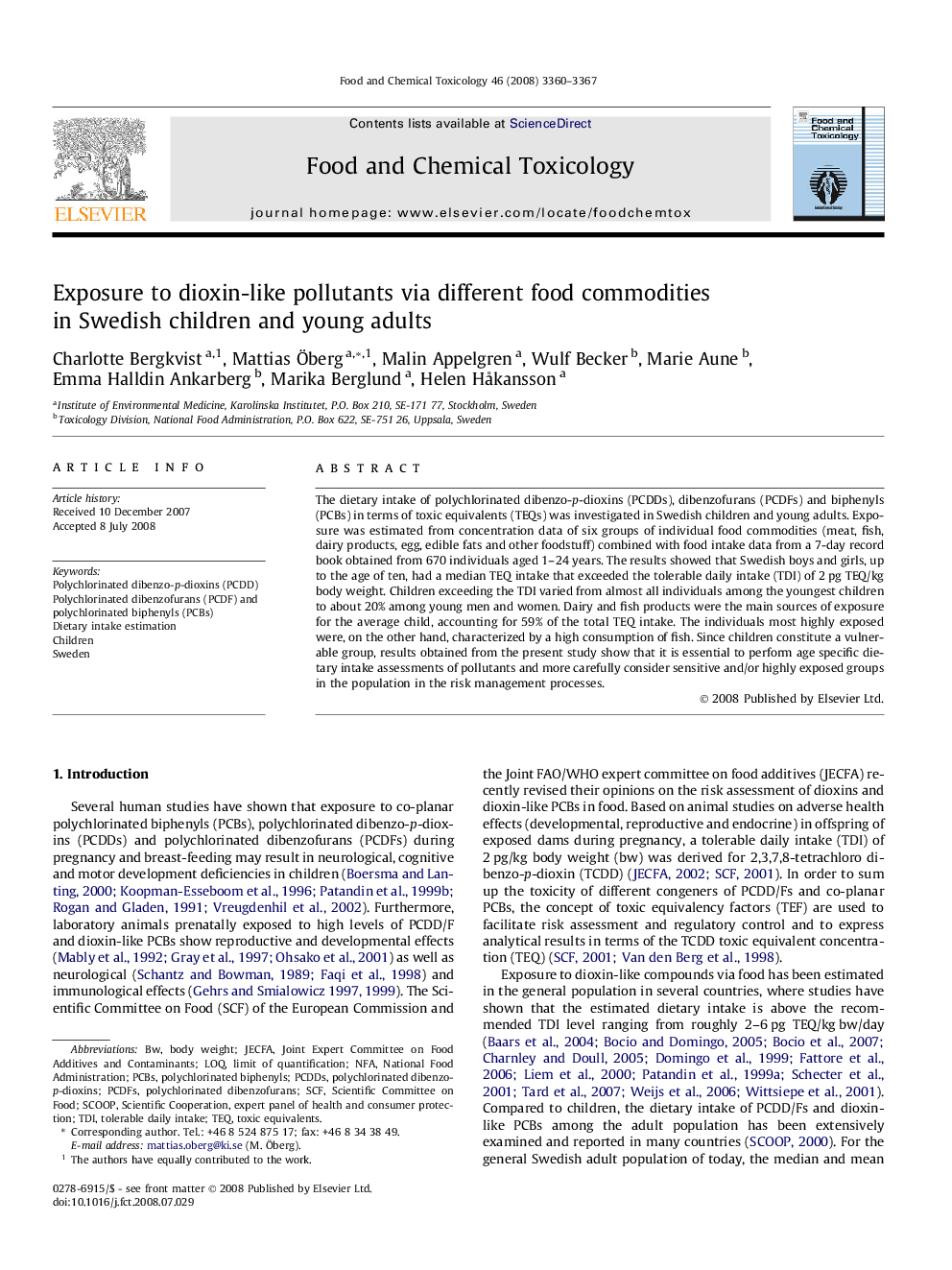| Article ID | Journal | Published Year | Pages | File Type |
|---|---|---|---|---|
| 2586351 | Food and Chemical Toxicology | 2008 | 8 Pages |
Abstract
The dietary intake of polychlorinated dibenzo-p-dioxins (PCDDs), dibenzofurans (PCDFs) and biphenyls (PCBs) in terms of toxic equivalents (TEQs) was investigated in Swedish children and young adults. Exposure was estimated from concentration data of six groups of individual food commodities (meat, fish, dairy products, egg, edible fats and other foodstuff) combined with food intake data from a 7-day record book obtained from 670 individuals aged 1-24 years. The results showed that Swedish boys and girls, up to the age of ten, had a median TEQ intake that exceeded the tolerable daily intake (TDI) of 2Â pg TEQ/kg body weight. Children exceeding the TDI varied from almost all individuals among the youngest children to about 20% among young men and women. Dairy and fish products were the main sources of exposure for the average child, accounting for 59% of the total TEQ intake. The individuals most highly exposed were, on the other hand, characterized by a high consumption of fish. Since children constitute a vulnerable group, results obtained from the present study show that it is essential to perform age specific dietary intake assessments of pollutants and more carefully consider sensitive and/or highly exposed groups in the population in the risk management processes.
Keywords
Related Topics
Life Sciences
Agricultural and Biological Sciences
Food Science
Authors
Charlotte Bergkvist, Mattias Ãberg, Malin Appelgren, Wulf Becker, Marie Aune, Emma Halldin Ankarberg, Marika Berglund, Helen HÃ¥kansson,
